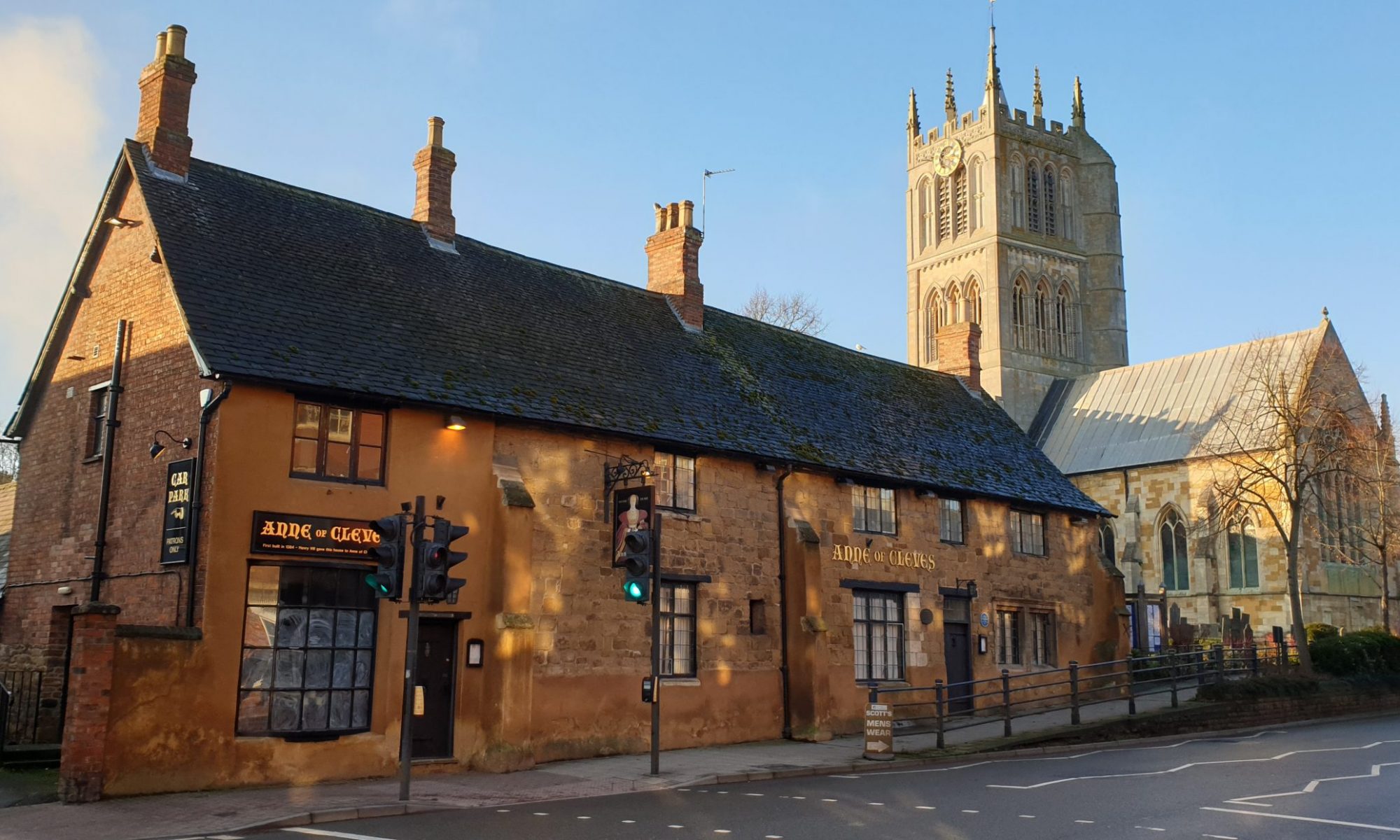
George Howard Boorne was born on 28th November 1893 and was the eldest son of Charles & Mary Boorne of 667 Gilmore Street, Ottawa, Canada.
George was a plumber in civilian life and on the 27th May 1915, aged 22 years & 6 months, he enlisted with Canadian Over-Seas Expeditionary Force following his younger brother Samuel who enlisted a few months earlier in January 1915.
According to his attestation papers, prior to enlistment, George had 3 years previous military experience as liaison at engineers camp.
His father Charles H Boorne [born Norfolk 18th December 1873-Caretaker]enlisted July 31st 1916 at Camp Hughes – he had been active in the militia, 99 Manitoba Rangers.
His brother,Samuel Thomas Boorne [born Ottawa June 13th 1896] – Dental Mechanic enlisted June 7th 1915 at Ottawa.
George embarked from Montreal on the 17th August 1915 bound for England aboard the SS Hesperian bound for the Canadian Training Depot at Shorncliffe. Only a few weeks later, on the 4th September, when the Hesperian was returning from Liverpool to Quebec, she was struck by a torpedo fired from U-20 under the command of Kapitanleutnant Walther Schwieger, who sank the Lusitania four months earlier.The Hesperian stayed afloat for two days before finally sinking on the 6th September whilst being towed back to Queenstown Ireland.
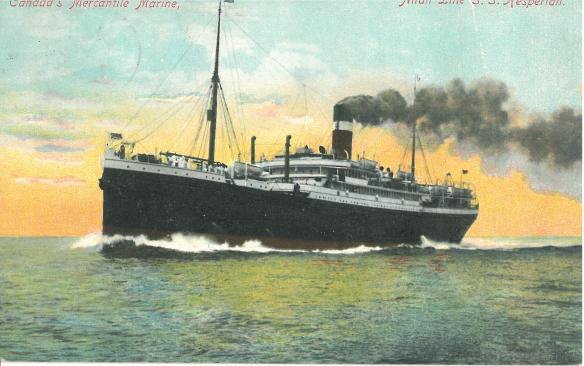
His service records state that he was taken on strength at the Canadian Training Depot Shorncliffe on the 1st September. On the 10th September, he was promoted to Acting/Colour Sergeant Major. On the 15th January 1916, George reverts back to his previous rank of Corporal at his own request due to proceeding overseas.

On the 20th Jan, he was taken on strength of the Signals Pool and on 10th April he was transferred again from the Signal Pool to 2nd Canadian Division Signals Coy serving with the Canadian Engineers in France and Belgium.
On 12th September 1916, he returned back to Shorncliffe and taken on strength of the Training Depot pending being granted a Commission.
On the 27th September, his service records show that he was “Discharged in consequence of appointment to a Commission in the Royal Flying Corps.” The London Gazette issued on 30 October 1916 contained the names of military personnel that were being assigned for duty with the RFC, one of which was Corpl. G. H. Boorne, from, a Can. Divnl. Sig. Co. 28th Sept. 1916.
The London Gazette issued on 30 October 1916 contained the names of military personnel that were being assigned for duty with the RFC, one of which was Corpl. G. H. Boorne, from, a Can. Divnl. Sig. Co. 28th Sept. 1916.
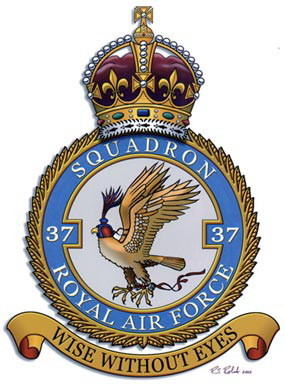
On the 28th September 1916, George was appointed the rank of Temporary 2nd Lt and achieved full promotion to 2nd Lt on 1st March 1917 upon posting to No 37 Reserve Squadron Royal Flying Corps and based at Scampton.
George was the pilot of RAF RE8 A3439 and was accompanied by 2nd Lt George T Potter as Observer on their training flight on 28th March 1917.
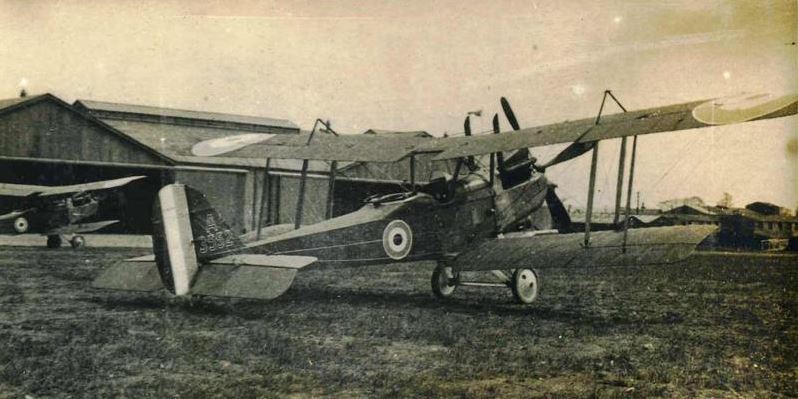
The Flight Magazine dated 5th April 1917 contained the following article: “At a Leicestershire town on March 29th an inquest was held on 2nd Lieut. G. H. Boorne, 24, of the R.F.C., who died the previous day as the result of an accident whilst flying over the Midlands on March 8th, and a verdict of “Accidental Death ” was returned. 2nd Lieut. Boorne was a native of Ottawa, Canada.”
The Melton Times newspaper published on Friday March 30th 1917 contained the following article:
“FLYING OFFICERS FATAL ACCIDENT Lieut. George Howard Boorne, of the Royal Flying Corps, who was severely injured as the result of an accident whilst flying over the Whissendine district on March 8th suddenly expired at Wicklow Lodge Hospital on Wednesday afternoon, and at an inquest held yesterday afternoon, before Mr. A H Marsh, coroner, a verdict of accidental death was returned. Deceased was a native of Ottawa Canada, and was 24 years of age. He was unmarried.”
The following weeks issue of the Melton Times contained more information about the inquest.
“Observer, 2nd Lt George Potter said that “on the 8th March he was flying from …. to …. as an observer with deceased as pilot. When in the vicinity of Whissendine station they had to make an emergency landing, owing to the engine not giving its maximum number of revolutions. Some little time previously, the engine had begun to give trouble, and they gradually lost height. They saw a field which was considered a suitable landing place, and came down all right until within about 60 or 70 feet of the ground, when the machine suddenly crashed down. He could not remember anything else until he got to the hospital.”
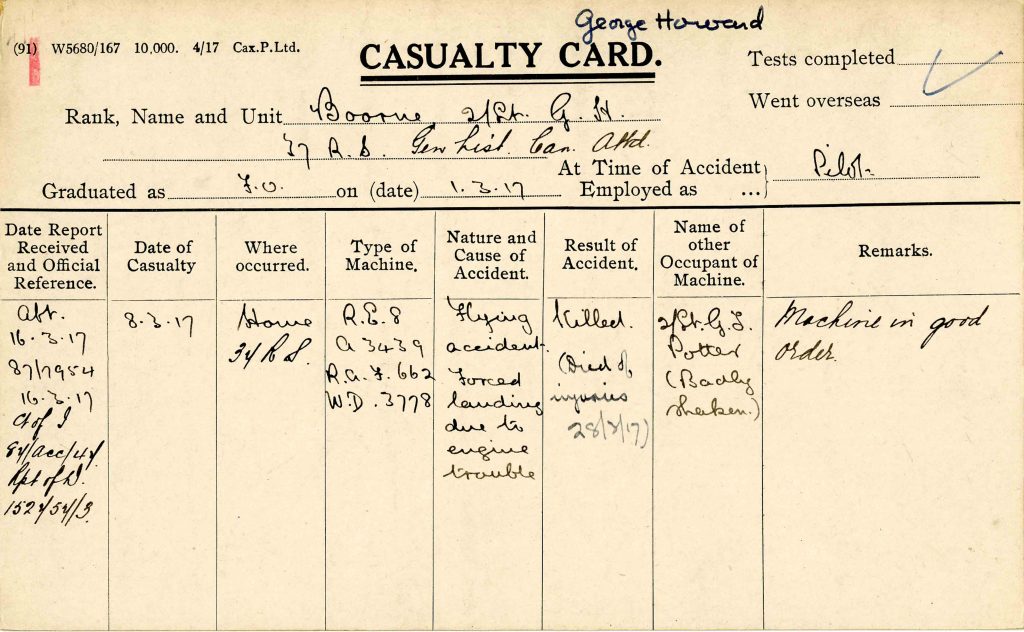
George is buried in the St John the Baptist Churchyard at Broughton, near Preston in Lancashire. According to the Grave Registration Report Form on the Commonwealth War Graves Commission site https://www.cwgc.org/find-war-dead/casualty/373632/boorne,-george-howard/ no headstone was required as a private memorial in the form of a granite cross was installed and maintained by family friends.
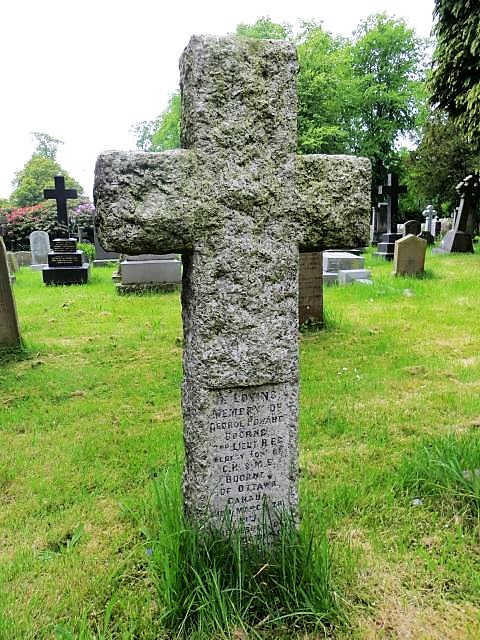 |  |
As mentioned in the about section of this website, I am from Lancashire originally before i left to join the RAF and one of my relatives, my Aunty Alice Fare is buried in the same graveyard as George and she and my Uncle James (Jimmy) Fare were married in this church.
